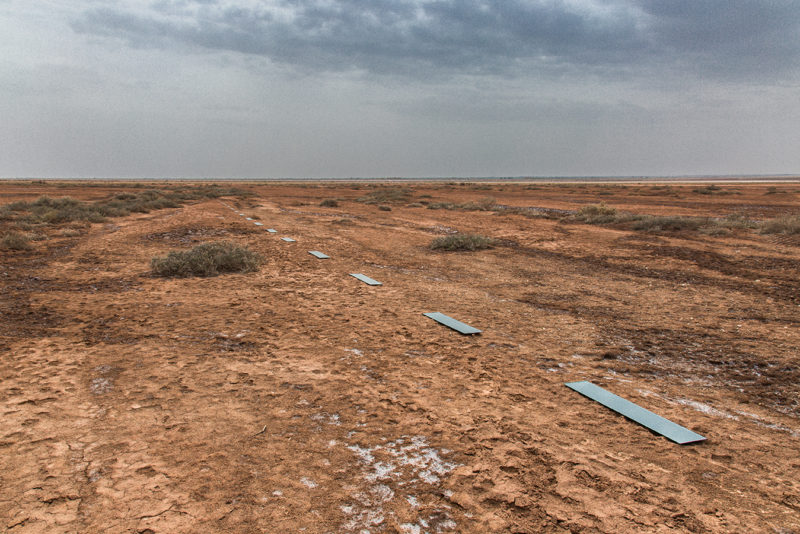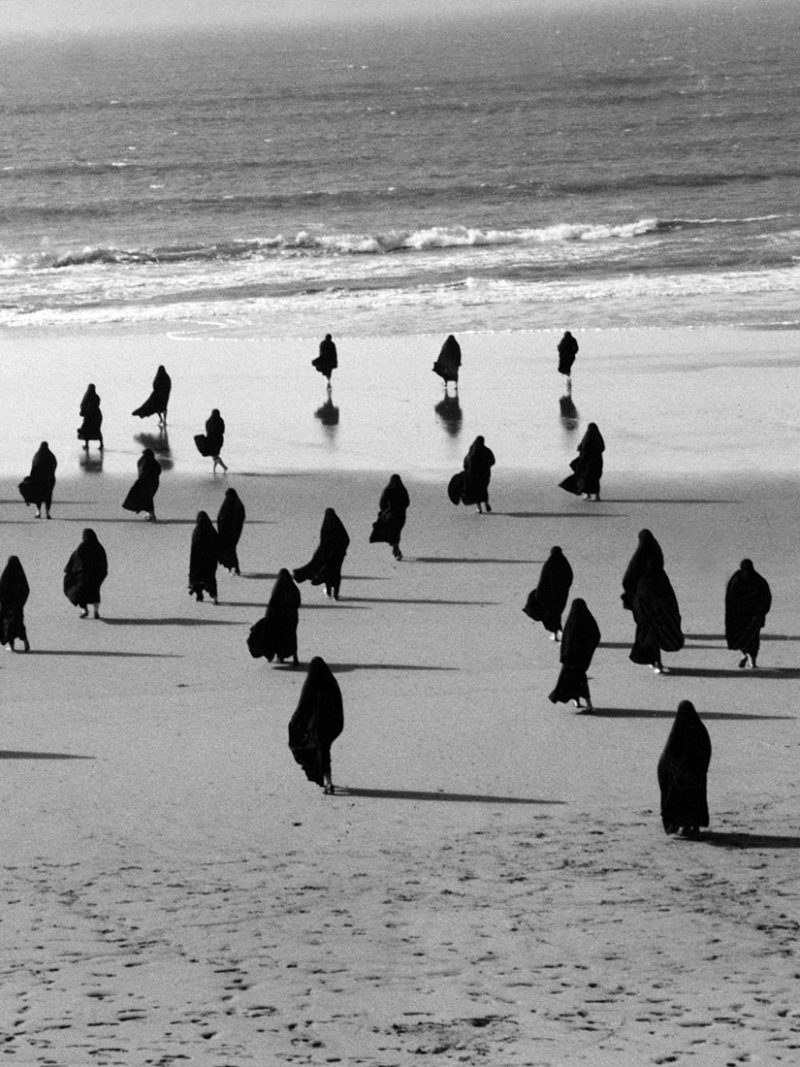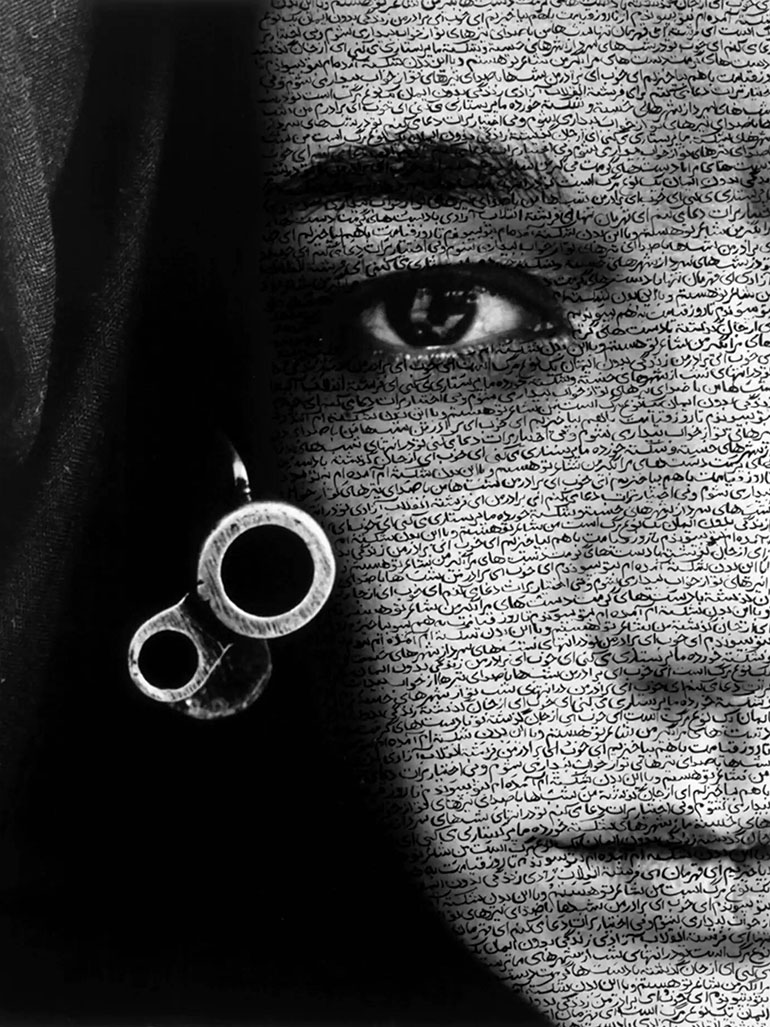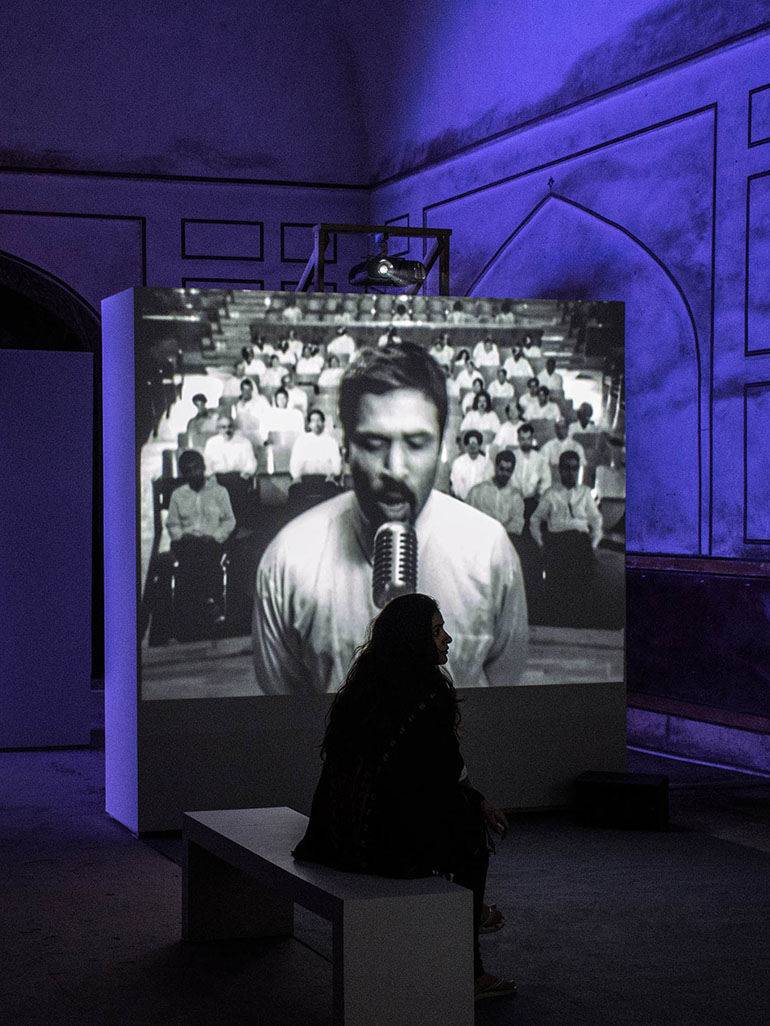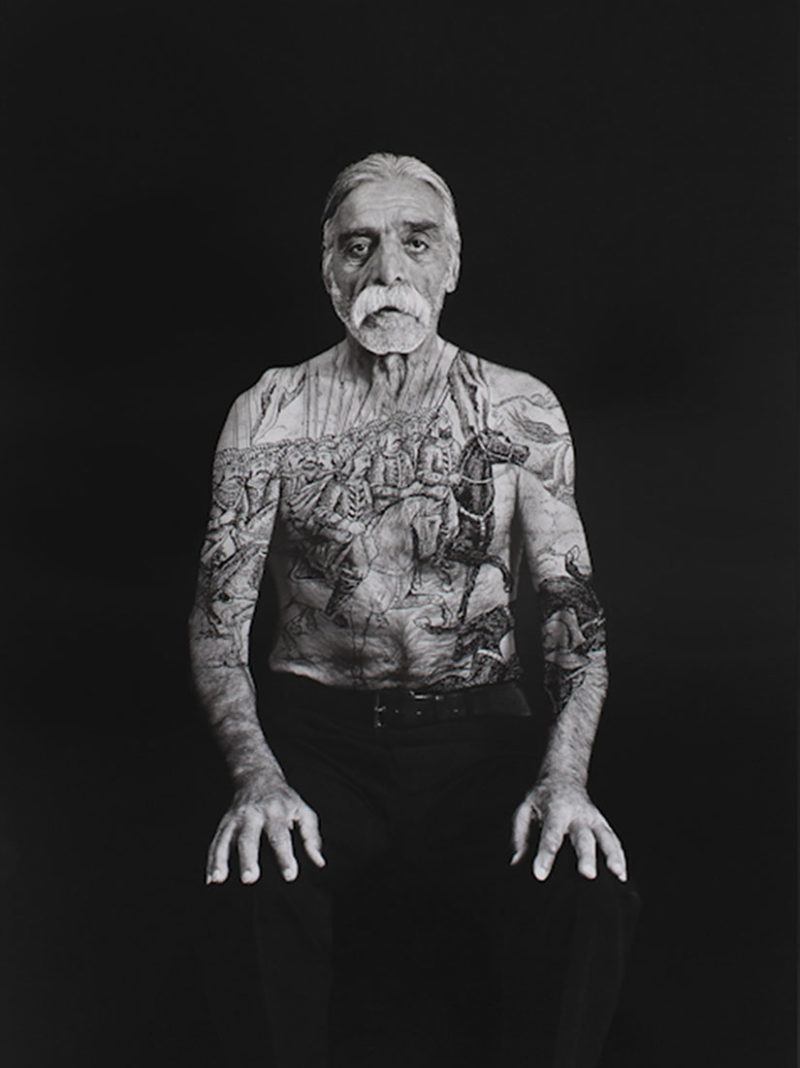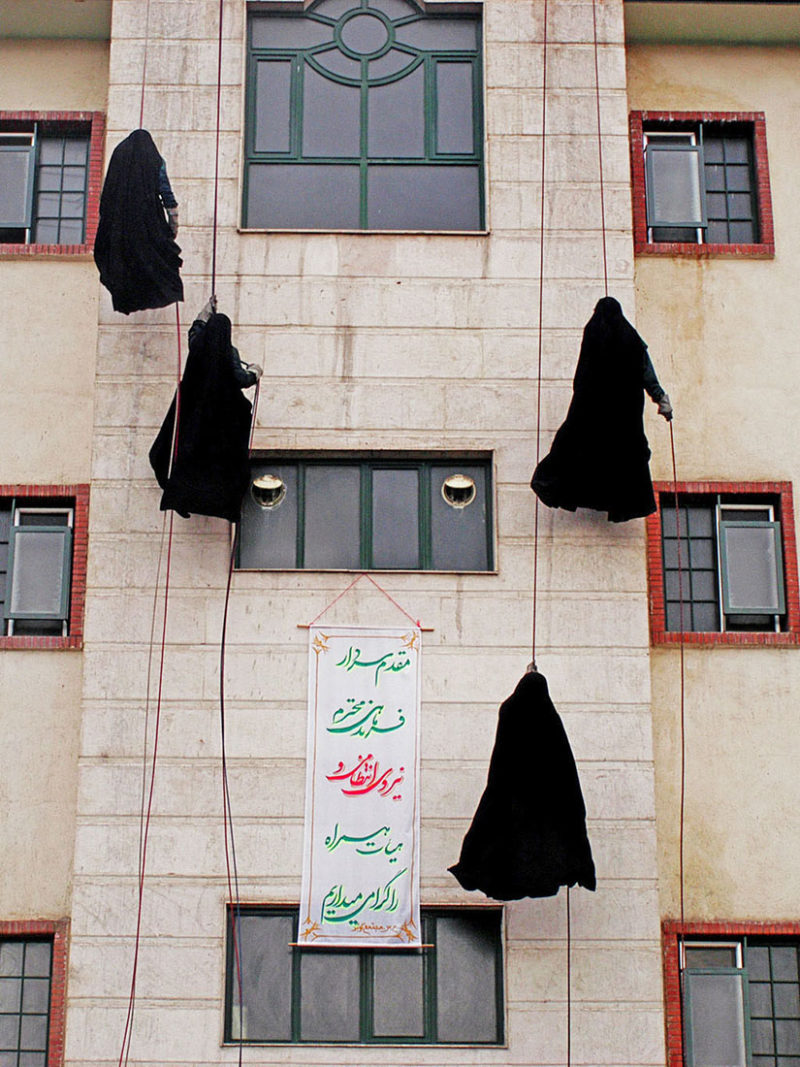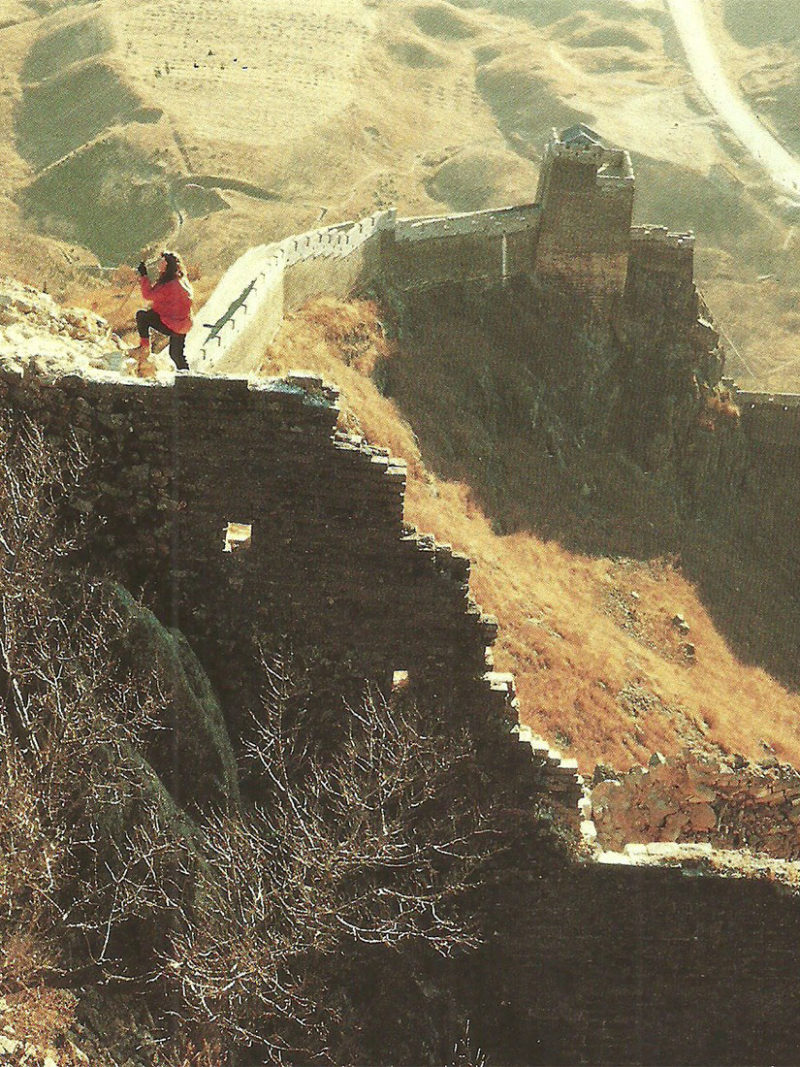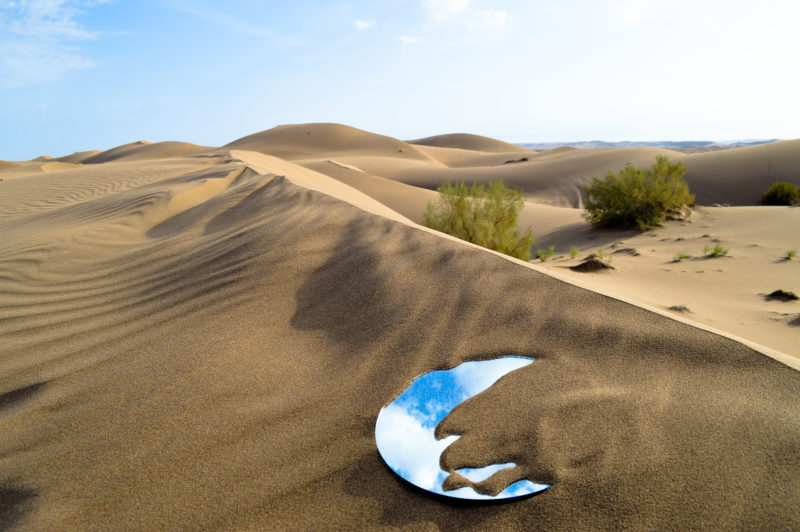
About Shirin Abedinirad
Who is Shirin Abedinirad?
Who is Shirin Abedinirad?
Around the world, artists have experimented with optical illusions. Amongst them is Iranian artist Shirin Abedinirad. Born in 1986 in Tabriz, Iran, she started with a passion for painting, partially inspired by her parents. Both of them highly encouraged her to pursue art as part of her life.
Her art studies began at Dr. Shariaty University in Tehran. Under the supervision of Abbas Kiarostami, Shirin also tested her hand in studying video art. At the IBAFF Film Festival in Spain, Shirin debuted a piece of performance art. She also performed some modeling after college. Shirin won a scholarship to work, study, and experiment at Benetton’s Fabrica Research Center in Italy.
She is widely known for her mirror installations that often present optical illusions as she experiments with light and movement through mirrors.
Previous work featured images of herself
As she started in her art career, Shirin included images of herself or representations of herself. This may have stemmed from her work as a model. You can see this in her video and performance artwork. One notable such piece is Ex Pencils1.
Themes of recent works
More recently, Shirin Abedinirad has been focused on connecting her art to the natural world. Eastern relics, history, and beliefs also play a significant role in her art, creating videos, performances, and installations.
Why doesn’t she use the hijab in her work?
Shirin has stated that she will not use her country of Iran or religion to gain her fame. An example of this is that she will not use the hijab in her work. While it may help her receive more attention, it would only do so because the hijab is a famous and controversial part of her home country.
Sanctions & tariffs: Iran’s artists suffer
Shirin uses the art and her influence in the country to help younger artists grow. Artists and other creatives in Iran have been hit hard by sanctions and tariffs placed on the country. It can be hard to get canvas paper and other art supplies that the creatives need. More importantly, it is hard for Iranian citizens to travel to some parts of the world.
Where has her work been shown?
Works from Shirin have been exhibited around the world. Mirrored Zuggurat was featured in Australia at the Underbelly Arts Festival on Cockatoo Island. Pieces have also been featured at the Land Art International Biennale, the Aggregate Space Gallery, FILE ANIMA+, and Sotheby Hong Kong. These are just a couple of examples of places she has been featured.
Mirror Installations
Some of Shirin’s best-known works are a collection of mirror installations. From Treviso, Italy to Central Desert, Iran, these mirror installations play optical illusions and show the natural beauty of these locations.
Some of her most famous works include the following:
Evocation, Central desert, Iran, 2013
In this installation, Shirin tackled one of the most challenging problems with desert-dwelling – the lack of water. Showcased in Iran’s Central Desert in 2013, Evocation used the reflective power of mirrors to bring quenching blue pools of ‘water’ to the sand.
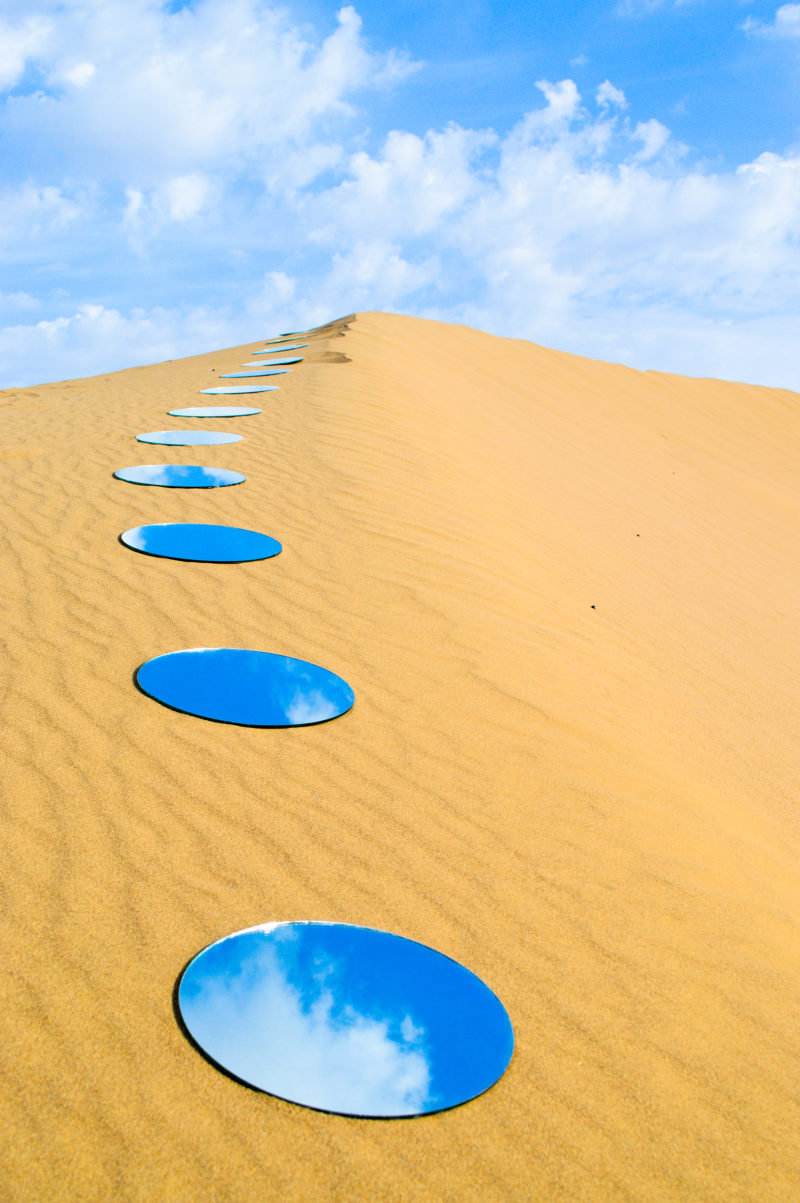
It involves mirrored circles, which at first glance they appear partially covered in the golden sand that resembles small ponds. But after a moment, you realize that these are not small ponds but rather the blue sky reflected across the dunes.
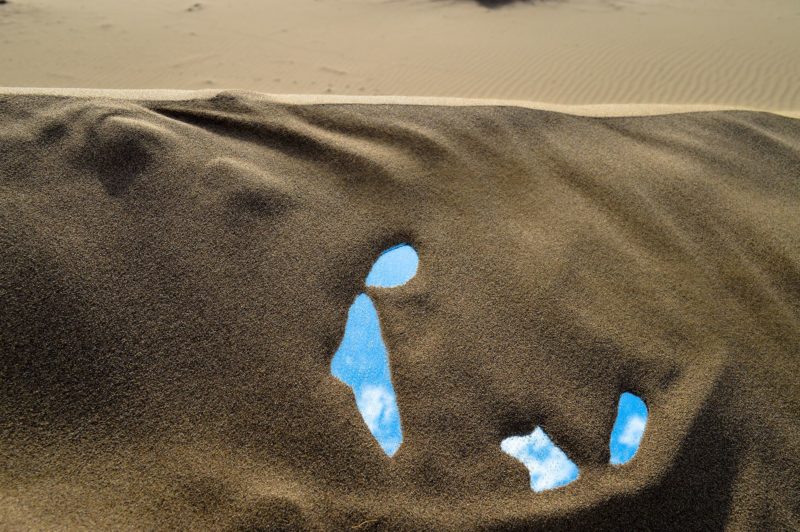
By changing our perception of nature and offering us a false narrative, the artist challenges the relationship between the human mind and the fundamental elements of nature.
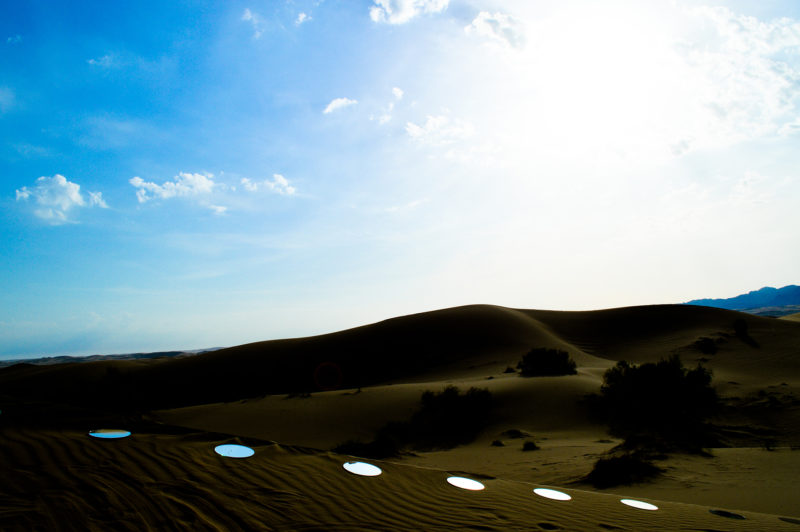
Narcissus, Isfahan, Iran, 2013
This installation is based on the mythological story of Narcissus and the artist’s love of wandering in the desert, which according to him, signifies purity.
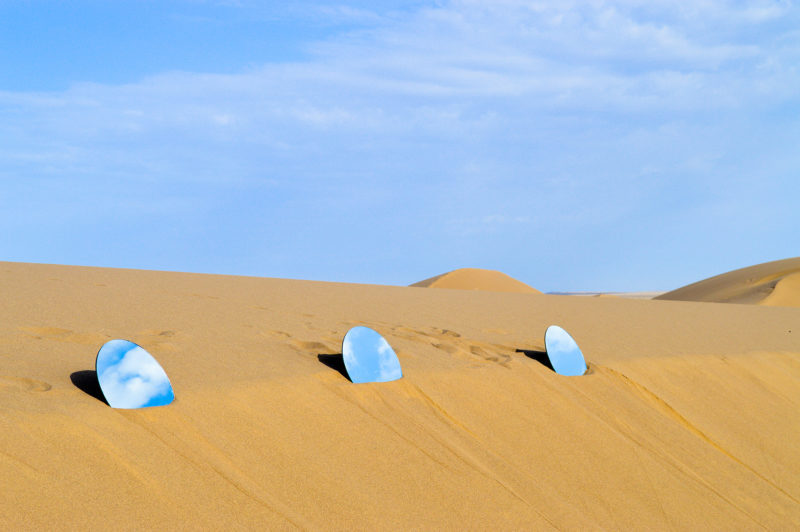
Shirin used round mirrors and simple geometric shapes to create reflections of nature across the desert. By intentionally using basic shapes, they mimic the forms found commonly in nature.
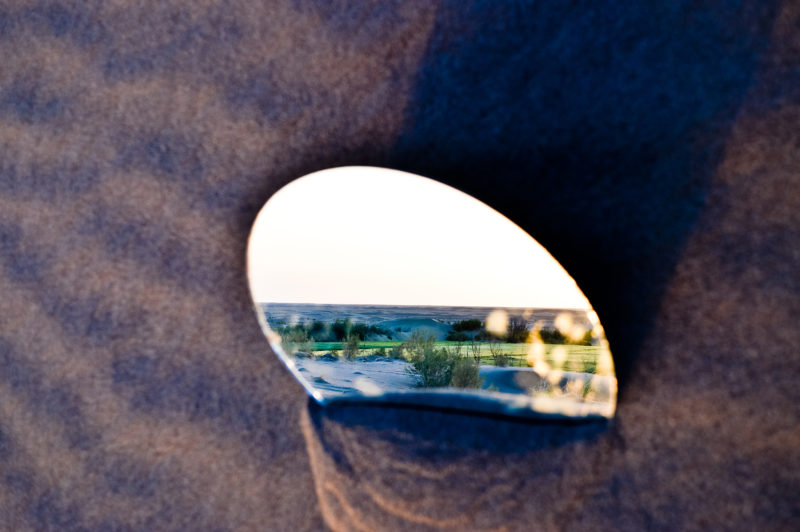
For the audience viewing the installation, the beauty of nature is ultimately doubled. This art installation was showcased in Iran Central Desert in 2013 and explores the relationship between human perception and elements of nature.
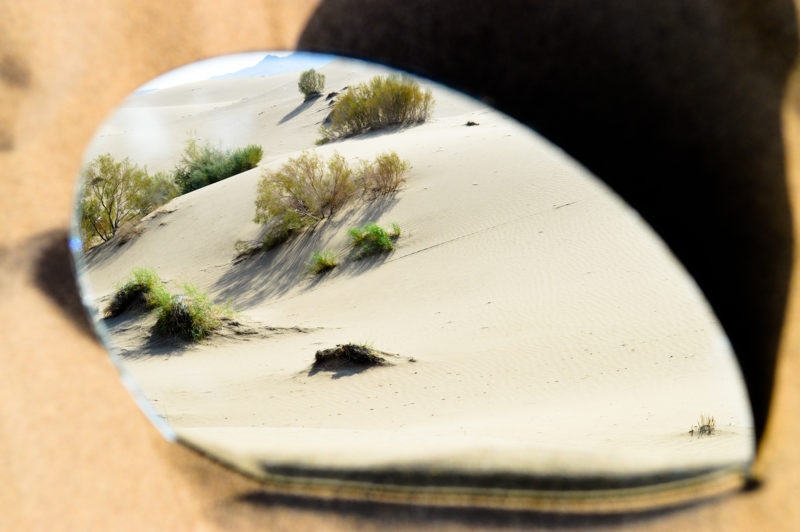
Heaven on Earth, Treviso, Italy, 2014
Created in 2014, Heaven on Earth is a site-specific mirror installation by Shirin located in Treviso, Italy. One of the first uses of mirrors in architecture was in Persepolis, Persia, at the Tachara Palace.
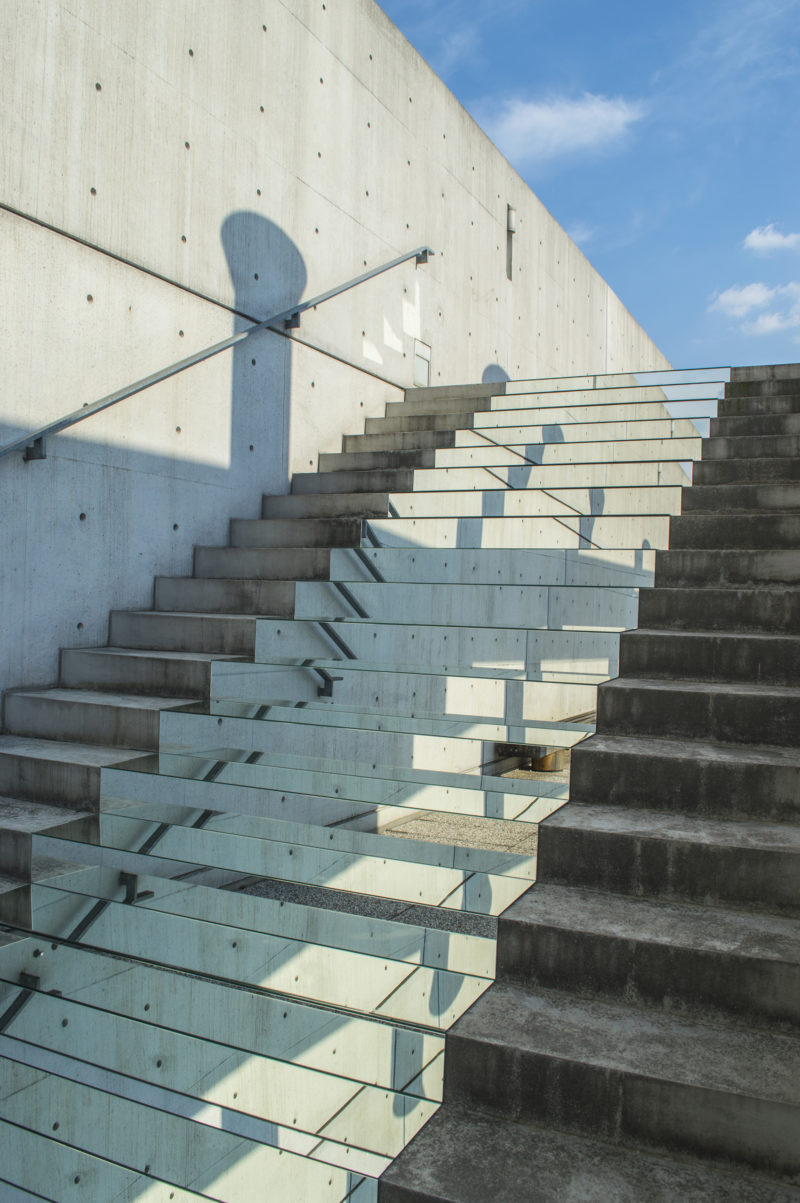
Glossy black stones were polished till their surface was reflective, expanding the palace’s size and beauty. 2,000 years later, Shirin returns to the concept of doubling space and light with the installation Heaven on Earth.
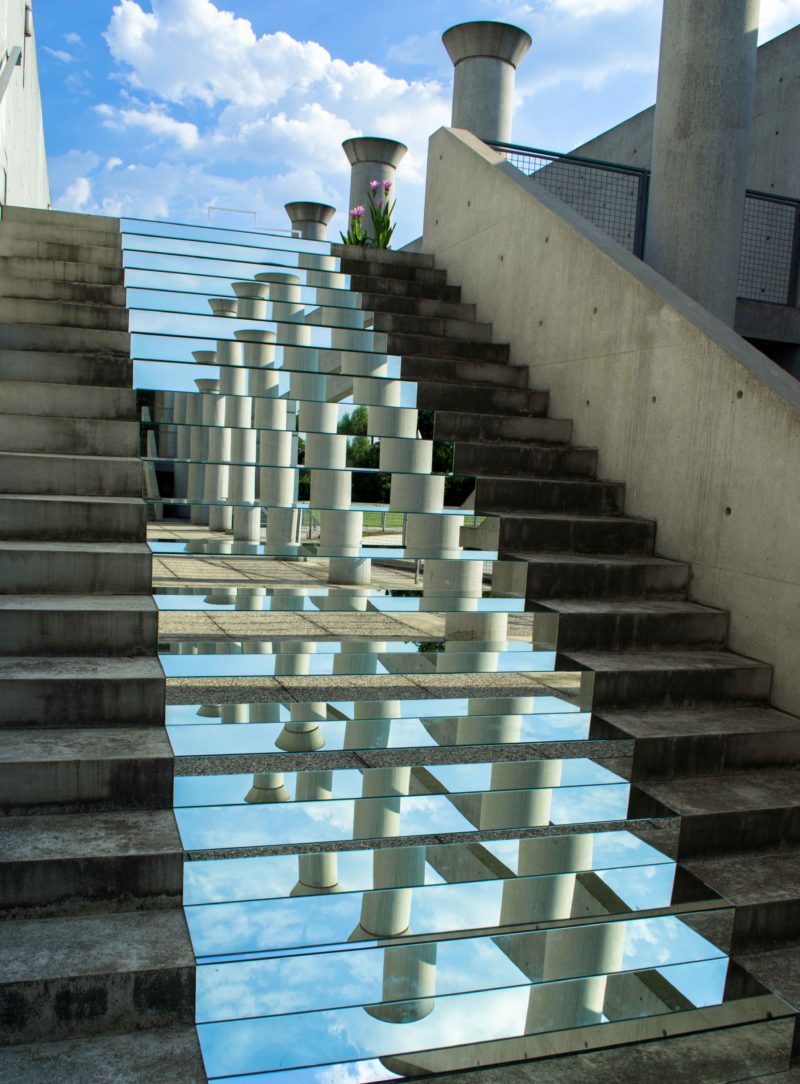
At the time, black stones were refined until their surfaces were reflective, enhancing the aesthetics of the palace and its size. In this artwork, Shirin returns to that concept of doubling space and light and involves basic geometric shapes and symmetrical composition of the mirrors angling up the cement stairs.
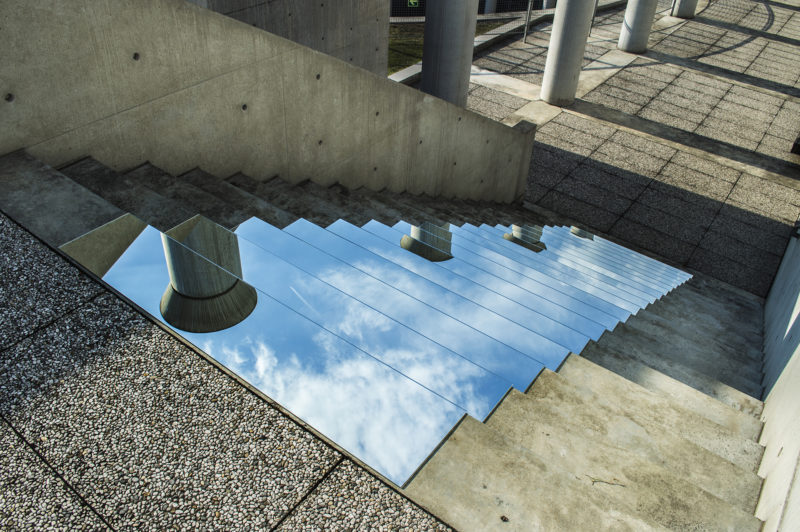
This technique is borrowed from Islamic art, where symmetry is considered the highest form of beauty. To the artist, mirrors are integral to creating a paradise; mirrors give light, an essential mystical concept in Persian culture.
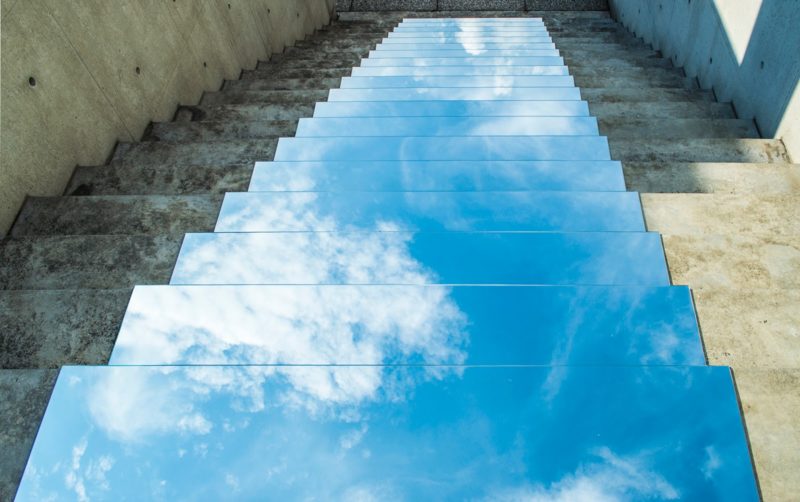
Standing in front of the staircase, one faces a transformative view of themselves and their concept of how the world is structured. When one stands at the top of the stairs looking down, they encounter an optical illusion that increases their light, and thus their spirituality of the space.
The very physics of nature are turned on their head – the sky is now the ground – and the light of the sun is magnified around the viewer. The blue sky spills onto the ground, imitating a pool, and a visitor is momentarily overcome with the desire to jump into the light.
Mirrored Ziggurat, Sydney, Australia, 2015
In 2015, Shirin completed this installation titled Mirrored Ziggurat, a pyramid of mirrors located near a bay in the Australian capital Sydney.
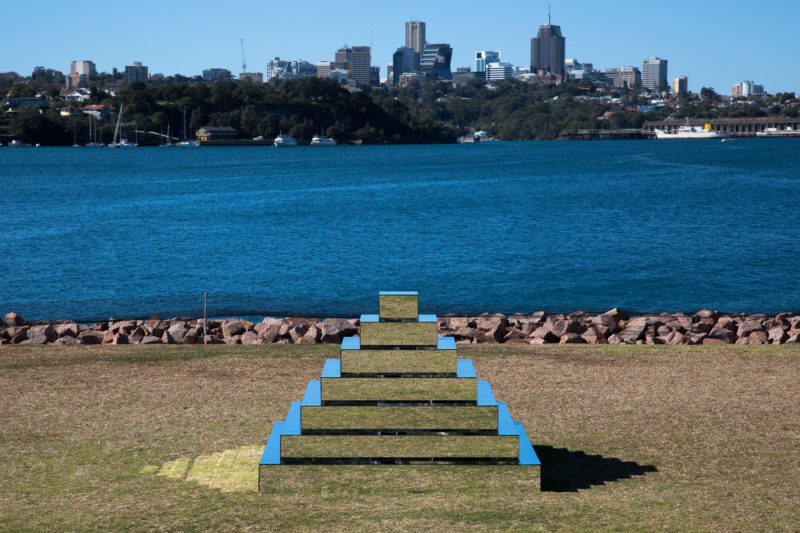
The work was created for the Underbelly Arts Festival. Like her previous works, the artist stitched the sky to the ground to create unusual optical illusions from almost all viewing angles.
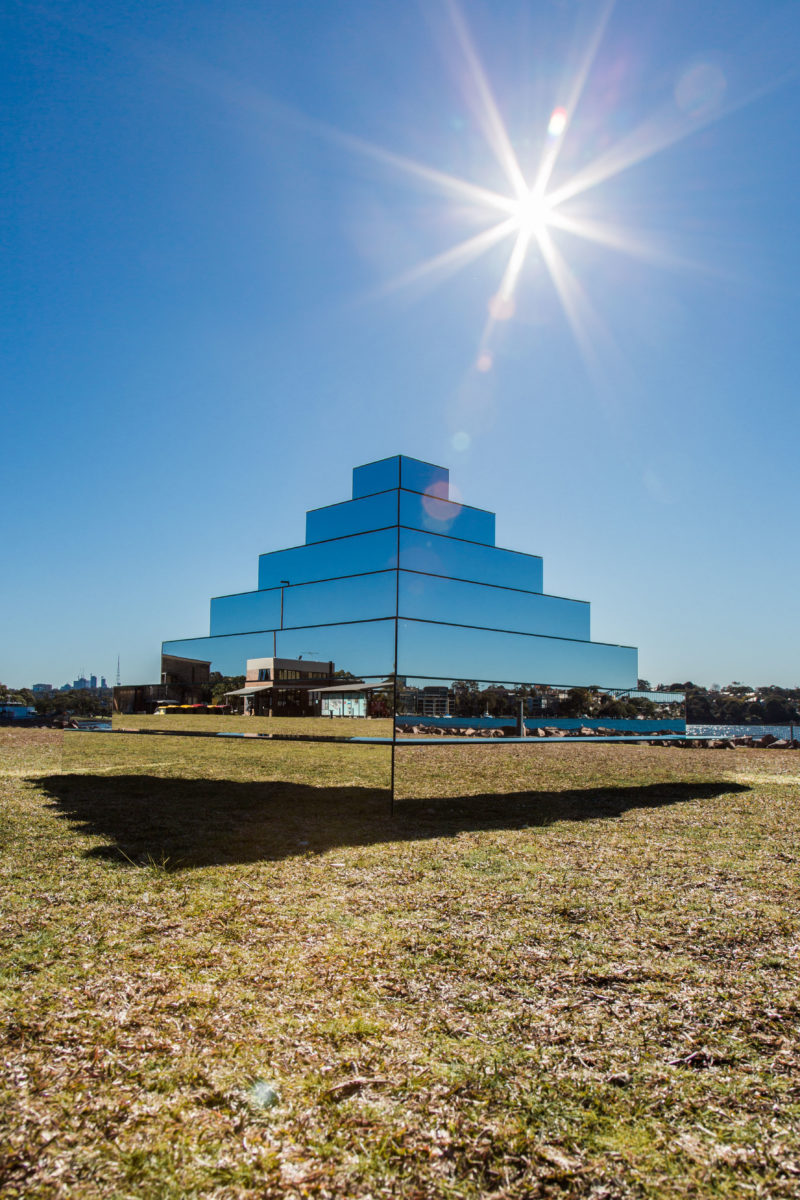
This installation was inspired by the pyramidal structure of Ziggurat, a common form of a temple in ancient Mesopotamia, where temples were erected tall and wide to connect the sky and the earth to bring humans nearer to their gods.
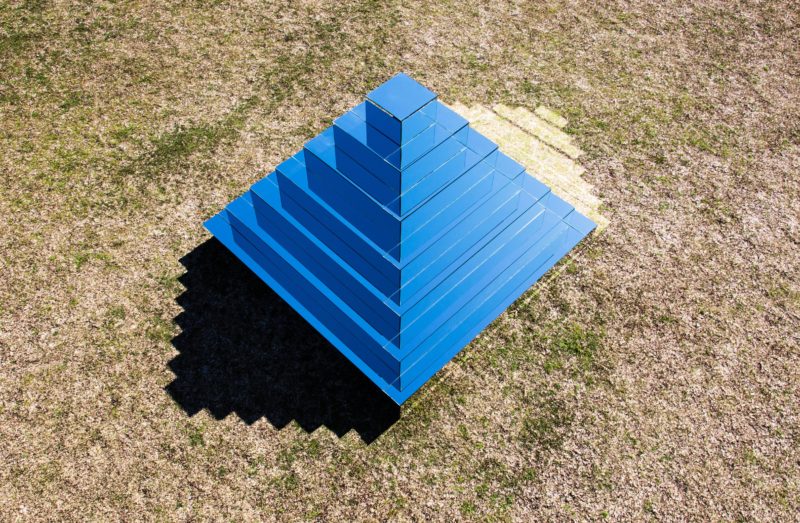
The Mirrored Ziggurat acts as a staircase that seeks to connect nature with human beings and create a union of ancient history and today’s world. The work offers a transformative view of the self as well as one’s environment.
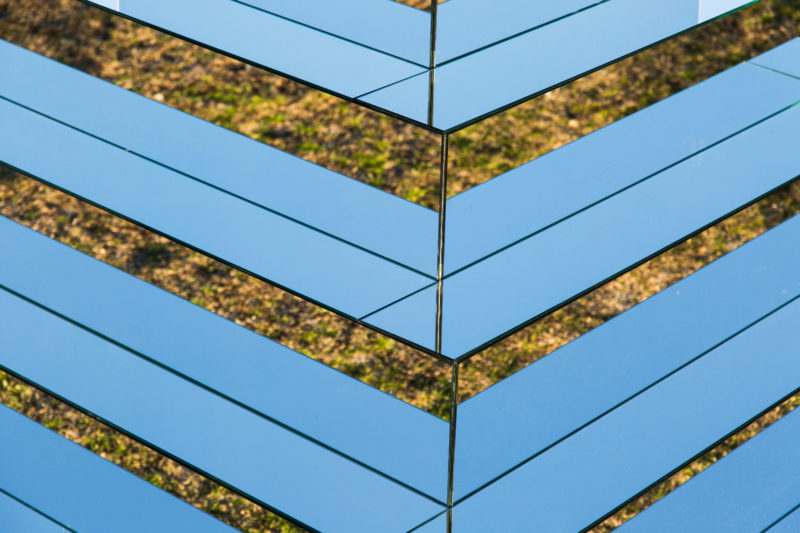
The Mirrored Ziggurat has seven levels that represent seven heavens. For the artist, mirrors amplify this paradise, giving light, an important mystical concept in Persian Culture, and a medium creating an optical illusion.
Babel Tower, Iran, 2016
The story of the tower of Babel happened when humankind had just one language and just one place to live freely without boundaries, a united humanity of the generations. The Lord, concerned that humanity could have too much power and freedom, punished them for their pride by multiplying their languages so that they could not understand one another.
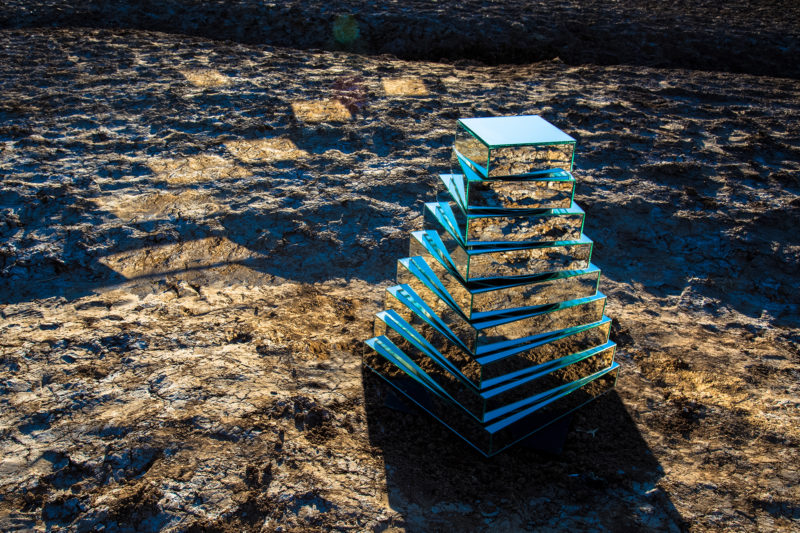
This interactive installation re-contextualizes the spiritual architecture of the Tower of Babel with modern materials, creating a connection between our present world and ancient history, blending the past, present and offering a union for the future.
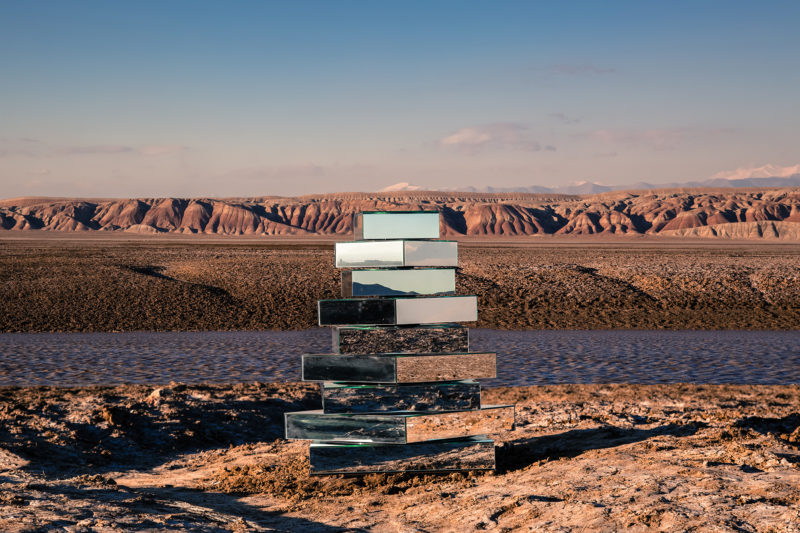
It features a stack of mirrored boxes programmed to slowly rotate, reflecting changing views of the sky and Iranian desert. Each mirror block was made to rotate individually in various patterns and configurations. For instance, each glass layer can spin slightly in turn or the whole tower can slowly contort into a twisted shape.
The top view of the installation connects it to the earth by reflecting the sky. This symbolizes the aim of the Babel tower to reach for heaven. The structural use of mirrors serves as a reflective vessel for light, an integral feature of paradise.
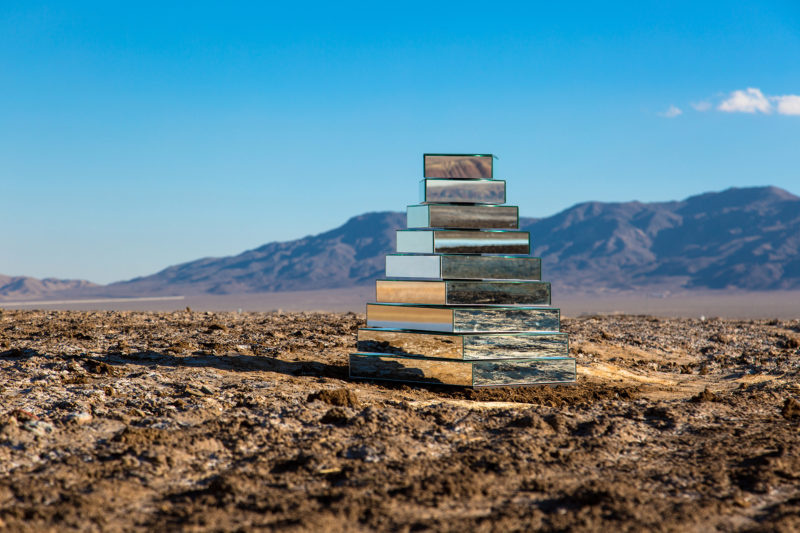
Sensors integrated inside the installation allow its movement to become dependent on weather conditions, and when installed in an urban center, it would also respond to interaction with an audience. When placed in a natural environment, its movement changes depending on the weather conditions.
This interactive installation gives a transformative image of the world by decomposing it into parts and recomposing it into a new union. Babel Tower is changing the image of nature and is gathering the view of the entire world in one piece.
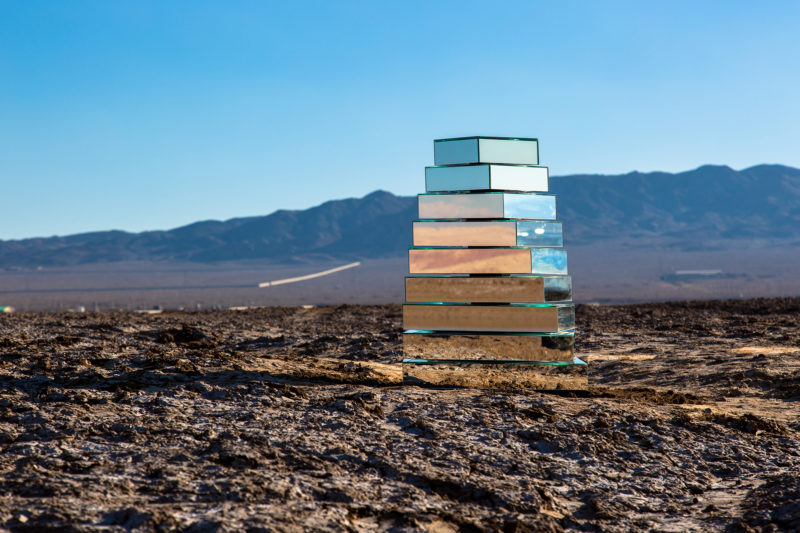
Revision, Lorne, Australia, 2018
In this site-specific installation titled Revision, Shirin assembled a ziggurat-shaped monument of retro television sets on a field at the mouth of the Erskine River in Australia. The theme of this art revolves around reflection, revelation, illusion, and truth, using the mirrors of the TV sets to reflect nature and people in its vicinity.
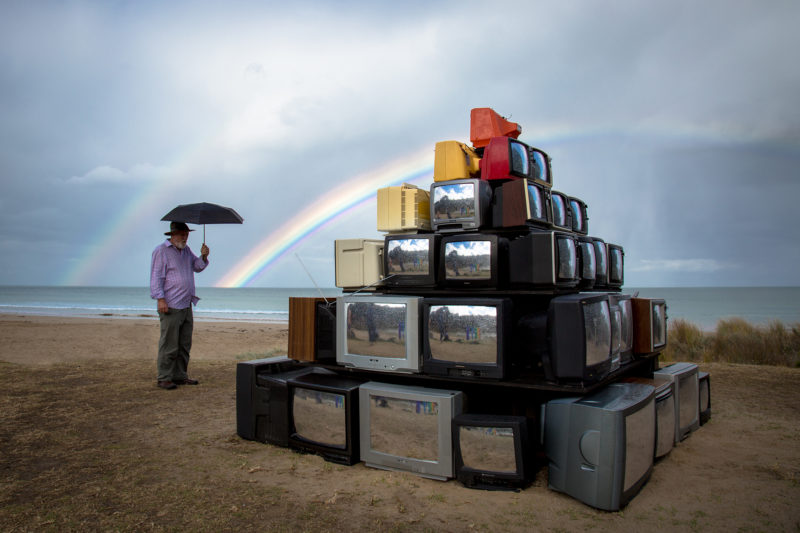
Through her project, she invited audiences to watch nature in a new frame. Instead of watching TV news, which we do not know if they are true or not, we could break the waves that televisions create and watch reality and nature instead.
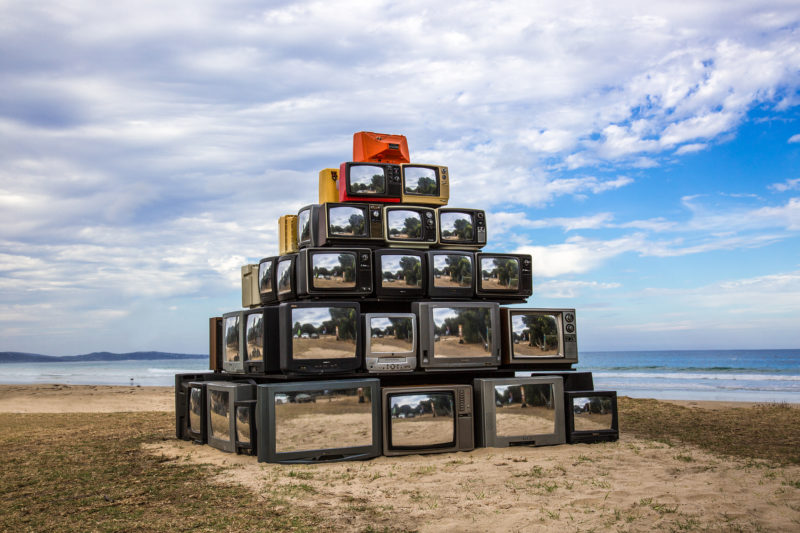
This installation created a live movie through the simple reflection of everyone and everything around it. When there is no one on the beach, the ocean itself plays a major role and it is watching its beauty.
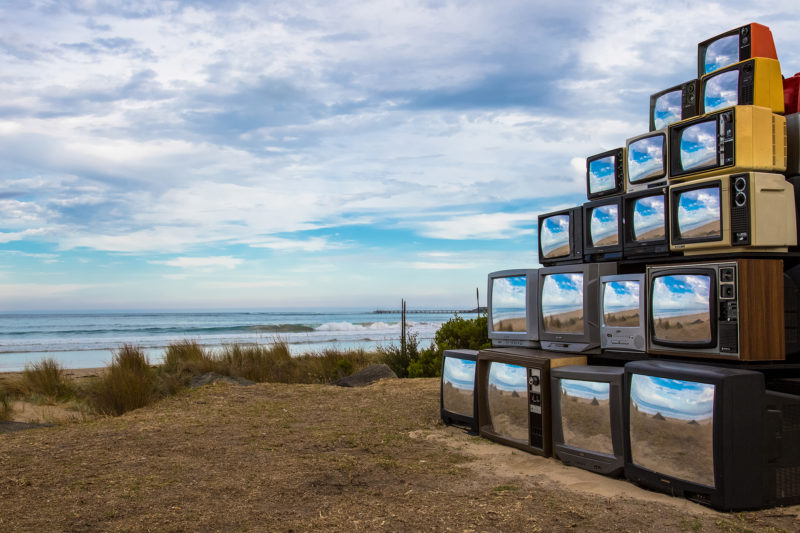
When the field is empty, the screens of the TV sets reflect nature as it transforms from night to day. The sky, ocean, and birdlife of the surrounding become the only subject on the screen. But when visitors populate the field, the screens reflect the movements of people – walkers, joggers, dogs, children, loners, and couples.
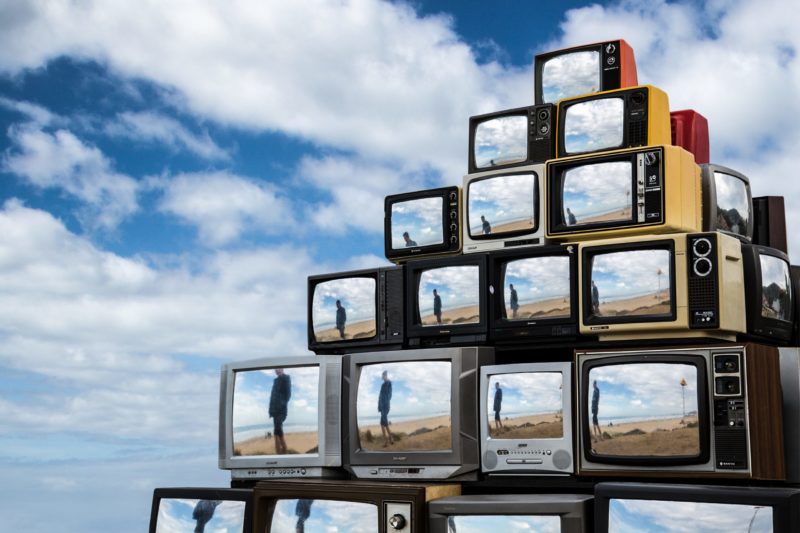
The Sky is Mine, Semnan, Iran, 2019
In this installation, Shirin presented a thematic plan of simultaneity, which has the longevity of human life.
The land on which I realize my dreams is replete with hopes and despair for me, even though it destroys my mountain to build high-rise apartments in the heart of the mountains. They cut trees to build roads for the vehicles whose lives are becoming shorter with time. Every morning on this very land, there is news about the death of dozens of children, animals, and humans, and each death news howls with hope.
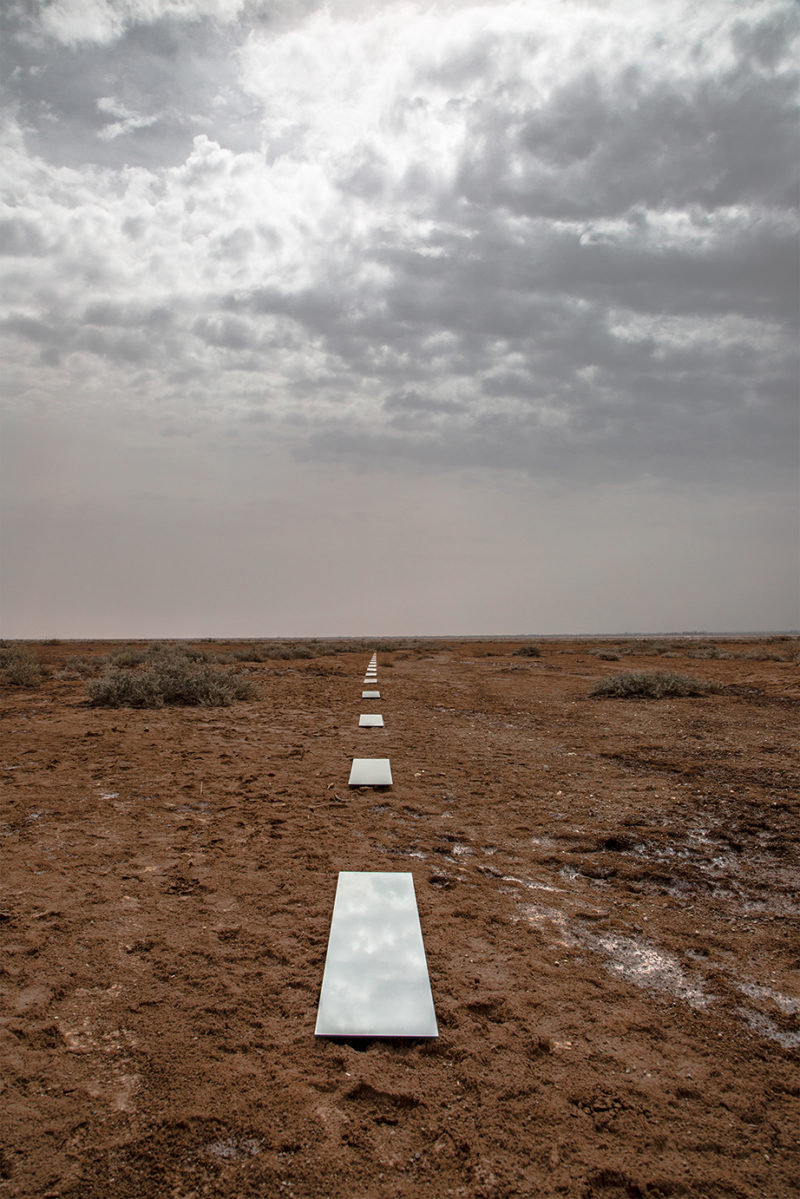
It was on this land, among stony tracks and vast deserts, where she sought a place that would be a window of life full of hope and delight. On the gloomy paths before her, she was looking for the skies.
Throughout the dark clouds, she searches for a comforting blue, the liberation from her bitter moments on the land that she loves. Shirin knows that some people sieve dreams and impose the realities on her. However, she brings her dreams from the sky to the land.
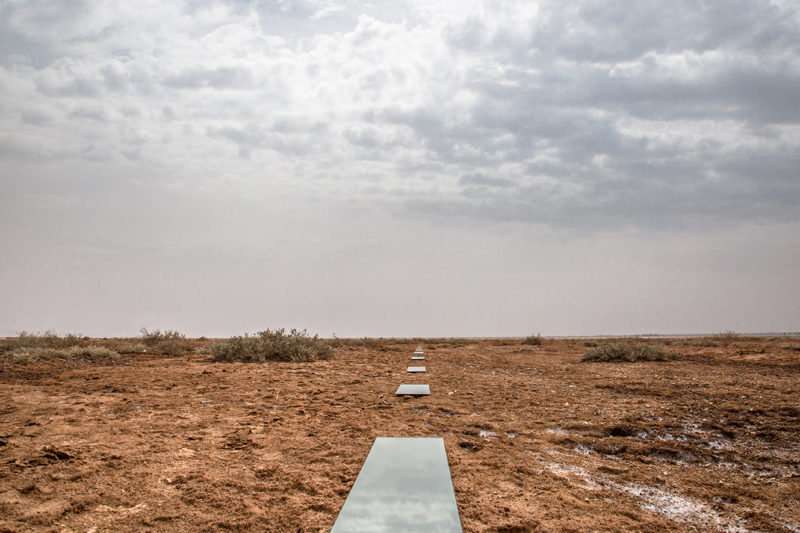
Sky is Mine is part of The Absence of Paths curated by Lina Lazzar for the Tunisian Pavilion at La Biennale di Venezia. The Absence of Paths was a component to the physical pavilion in Venice, a online platform as a democratic space to showcase contributors’ thoughts and perspectives on migration.
